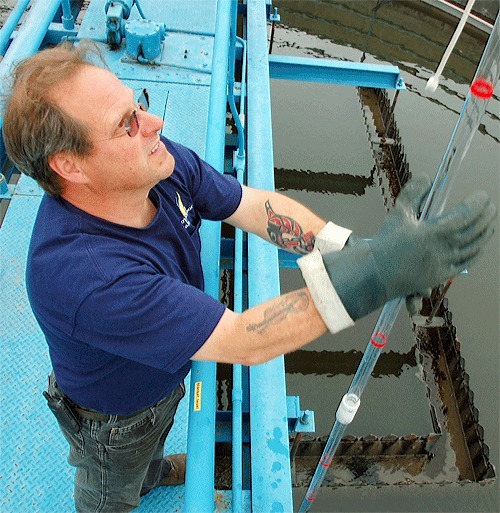To help pay for a new $70 million wastewater treatment facility, Oak Harbor residents will likely see annual increases on their monthly utility bills over the next eight years.
At a May 27 workshop, the City Council was briefed on a comprehensive rate study proposing increases in each of the city’s four utilities – sewer, solid waste, stormwater, and water – to help cover the cost of the new facility.
According to Cathy Rosen, director of Oak Harbor Public Works, the city’s two existing wastewater treatment plants, located at the Seaplane Base and in Windjammer Park, are so old that they may soon be unable to meet the state Department of Ecology’s increasingly tough clean water standards.
“We’re meeting our permit limits now but I know we won’t be in the future,” Rosen said.
While any rate increase would first need to be approved by the council, the study, which was completed by Seattle-based HDR Engineering, Inc., at a cost of $134,995, is recommending a complex annual rate increase schedule.
Sewer rate increases would begin at 3.5 percent in 2010 and grow to 12.5 percent per year in 2018. Storm drain rates would also begin this year with a 3.5 percent increase but would remain constant until 2015. Rates for solid waste are the smallest with an annual 2.5 percent increase from 2013 to 2015.
Proposed changes to the water rate are the most complicated. The rate will increase by 8 percent in 2011 but will decrease to 6 percent by 2015. However, the method for calculating the rate will also change.
The system is currently set up so the more water customers use, the less they pay. Rosen said that system is backwards and represents outdated philosophies. Where resources were once believed to be inexhaustible, the focus is now on conservation and price breaks should go to those using less water. The change will definitely have an effect on people’s water bill, Rosen said.
“Some peoples rate will go down while others will go up,” she said.
Although the vast majority of the rate increases being discussed will help cover the cost of the new wastewater treatment facility, the water rate hike is expected to help shoulder the city’s increased water costs.
Oak Harbor purchases the vast majority of its water from the city of Anacortes, and it is in the process of making several improvements at its treatment facility, Rosen said.
City Council Mayor Pro-tem Danny Paggao said he believes most of the City Council will be on board with the utility rate hikes, as they are needed, but that they likely won’t go over as well with the public.
“I hope they will be receptive but I’m expecting some adverse reaction from the public,” Paggao said.
City Council member Jim Campbell said he believes the rate increases are necessary for the new wastewater treatment facility but doubts they will be enough to cover the entire $70 million bill. State or federal grants will likely be sought but the city has a poor track record when it comes to winning grants, he said. It may not be popular, but the tab will more than likely fall on the shoulders of Oak Harbor residents.
“If we don’t do something to the sewage plant, it’s going to lay over and die,” he said.



